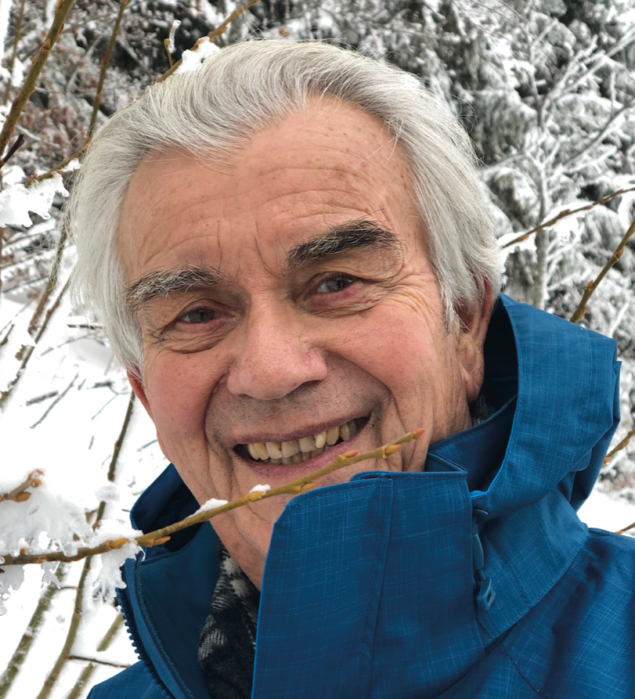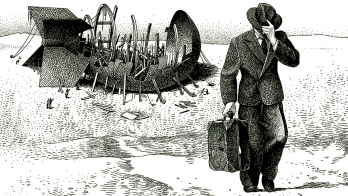
Gerd Beyer, who passed away on 20 January aged 81, played a major role in the development of biomedical research, both at CERN’s ISOLDE facility and at many other laboratories. He will be remembered as a tireless worker in the field of nuclear and applied nuclear physics combined with new radiochemical methods.
Gerd was born in Berlin in 1940 and studied radiochemistry at the Technical University of Dresden (TUD). He then joined the Joint Institute for Nuclear Research (JINR) in Dubna, where he developed advanced production methods of rare short-lived radioisotopes for use in nuclear spectroscopy. At the Central Institute for Nuclear Research in Rossendorf, he became proficient in the use of the U-120 cyclotron and the RFR research reactor to produce medical radioisotopes, and in the development of the associated radiopharmaceuticals. He completed his Dr. habil. at TUD on the production of radionuclides by means of rapid radiochemical methods in combination with mass separation.
In 1971 Gerd was invited to ISOLDE, joining Helge Ravn to prepare extremely pure samples of rare long-lived nuclei for studies of their electron-capture decay, in view of their potential for determining neutrino masses. Back in Rossendorf, he continued to develop radiopharmaceuticals and to introduce them into nuclear medicine in the former East Germany and the Eastern Bloc countries. He developed a number of new methods for labelling and synthesising radiopharmaceuticals, in particular the rather difficult problem of efficiently separating fission-produced 99Mo from large samples of low-enriched uranium. This brought him into many collaborations all over the world, with a view to transferring his know-how to other laboratories. As head of cyclotron radiopharmaceuticals, he took the initiative to introduce a PET scanner programme in the German Democratic Republic (GDR), based on the Rossendorf positron camera, using gas detectors derived from pioneering work at CERN.
During his visits to CERN, Gerd spotted the potential of the ISOLDE mass-separation technique to allow the introduction and use of better-suited but hitherto unavailable nuclides.
In 1985, in close collaboration with ISOLDE, he began to prepare for the future use of large facilities to produce such radionuclides. He reactivated ISOLDE’s contacts with the University Hospital of Geneva (HUG), starting a collaboration on the use of exotic positron-emitting nuclides for PET imaging, which resulted in the development of new radiopharmaceuticals based on radionuclides of the rare earths and actinides.
Shortly after the fall of the GDR, Gerd lost his job at Rossendorf and had to start a new career elsewhere. Via a CERN scientific associateship, he became a guest professor at HUG and, later, head of its radiochemistry group, with responsibility for setting up and operating a new cyclotron. This allowed him to continue his work on developing new approaches to labelling monoclonal antibodies and peptides with exotic lanthanide positron emitters produced at ISOLDE, determining their in vivo stability and demonstrating their promising imaging properties. Gerd was also the first to demonstrate the promising therapeutic properties of the alpha emitter 149Tb.
When he retired from HUG, Gerd co-proposed that CERN build a new radiochemical laboratory in connection with ISOLDE. Here, the large knowledge base on target and mass-separator techniques for the production and handling of radionuclides could be used to make samples of these high-purity nuclides available for use in a broader biomedical research programme. Years later, Gerd’s initial idea was eventually realised with the creation of the CERN-MEDICIS facility.
Gerd was a first-rate experimental scientist, highly skilled in the laboratory, and he stayed professionally active to the very end. As a guest professor, a member of numerous professional societies and a holder of many consultancy positions, he spared no effort in sharing and transferring his know-how, recently to the young generation of scientists at MEDICIS.
During Gerd’s outstanding career, his work on the production of radiopharmaceuticals saved innumerable lives. His R&D towards new radiopharmaceuticals and, in particular, his pioneering work on 149Tb for targeted alpha therapy, is opening up new perspectives for efficient cancer treatment. It is therefore particularly tragic that the development of efficient antiviral drugs came too late to support Gerd in his brave fight against COVID-19.








